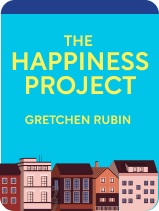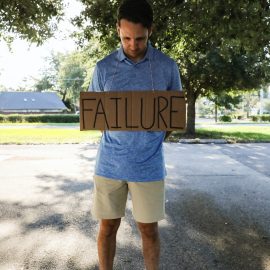

This article is an excerpt from the Shortform book guide to "The Happiness Project" by Gretchen Rubin. Shortform has the world's best summaries and analyses of books you should be reading.
Like this article? Sign up for a free trial here .
Do you feel like you’ve accumulated too much clutter yet find it difficult to get rid of it? What types of clutter are most common in your home? Why is it important to take time to declutter your life every now and then?
It can be difficult to part with things that you own but excessive clutter drains your energy. Therefore, it is important to take some time to declutter your life by eliminating things that no longer serve you.
Here are some simple and practical tips on how to declutter your life.
It’s Time to Declutter Your Life
Your surroundings affect your attitude, calmness, and energy. Clutter in your home drains your energy, while eliminating clutter in favor of useful, well-liked things is energizing because it:
- Alleviates the guilt you feel about bad purchases or too-small clothing.
- Eliminates the frustration of not being able to find what you’re looking for.
- Surrounds you with more of what makes you happy—even though you might have fewer belongings, in the end, they’re the belongings that you genuinely like and use.
- Cuts down on choice. Often, too many options make you feel overwhelmed or discouraged—this is why you feel you have “nothing to wear” even with a closet full of clothing. Having fewer, better choices is more satisfying and less overwhelming.
Don’t look at your whole house at once—this will make the task feel insurmountable. Instead, pick one place to start—such as your bedroom closet, the dining room table, or the kids’ playroom—and take stock of your clutter. To clearly see what needs to be eliminated, understand that “clutter” takes many forms.
- Nostalgia clutter includes items you’re holding onto from your past, even though you don’t need or use them, such as hockey equipment from your college days.
- “Useful” clutter includes items that are useful, just not for you. This clutter looks like boxes of old cell phone chargers or half-empty cans of house paint.
- Sales clutter includes items you bought because they were on sale, but don’t use, such as impractical clothing or one-purpose kitchen gadgets.
- Free clutter includes items you’ve accumulated because they were given or handed down to you, such as company tote bags or a gifted purse that’s not your style.
- “Shouldn’t” clutter includes items that you’re holding onto but really shouldn’t use anymore, such as ratty sweatshirts or a half-broken pair of skis.
- Ambitious clutter includes items that you have the ambition to use, but probably won’t, such as scrapbooking materials or fancy cake decorating supplies.
- Buyer’s remorse clutter includes bad purchases—while holding onto it feels like you’re “using” it in some way, giving it away would feel like admitting you made a poor choice.
For each of your decluttering tasks, set up three piles: throw away, give away, and keep. Then, assign your items to one of these piles.
- Put anything that is objectively useless into the throw away pile, such as t-shirts that are riddled with holes or phone chargers from the early 2000s.
- Give away anything that’s usable but you’ll realistically never use, such as pants that haven’t fit for 5 years or the breadmaker still in its sealed box.
Be ruthless. Once you’ve made your obvious throw-away and give-away choices, things become a bit trickier—you’ll now have to consciously work against your rationale for keeping unnecessary things. Ask yourself: Do I have a specific plan for using this item within the next month? If not, give it away. If you say, “I would or could use this…” that indicates that it’s not something you use. If you say, “I have used this…” it means it’s not in regular use. Give it away.
Maintaining a Clutter-Free Home
One of the most difficult parts of getting rid of clutter is maintaining a clutter-free home, but you can stay on top of it by effectively identifying the problems and setting up daily decluttering rituals.
Identifying the problems: If you’re having a recurring clutter problem, think about the root problem of the clutter—this will naturally lead you toward solutions. For example, if you’re constantly picking up shoes all over the first floor of your house the problem is likely that there’s no convenient place to put them. Put a shoe rack by the front and back doors.
Set up daily decluttering rituals. Putting two daily rules in place will help make sure that your space doesn’t become overrun with clutter again. First is the one-minute rule—if a task can be accomplished in one minute, such as putting away clean dishes, do it right away. Second is the before bed ritual—spend ten minutes before bed tidying up your space. Not only does this create a happier and less stressful environment to wake up to, but it’s also a calming physical activity that primes you for good sleep.
Take Care of Mental Clutter
You need to take your mental clutter out alongside the physical clutter. This means confronting your list of incomplete tasks that makes you feel overwhelmed and guilty whenever you think about it.
While putting off tasks for “later” feels easy in the moment, tackling them is vital to your happiness because constantly thinking of your to-do list is a huge drain on your mental energy. Letting these tasks nag at you doesn’t make sense because many of them—such as sending an email or asking for a favor—aren’t particularly time-consuming. The mental space you allow them to occupy is disproportionate to their size or difficulty. There are two steps to clearing out this unnecessary mental clutter.
- Sit down and list all the tasks bouncing around your mind—such as emails to be sent, coffee dates to set up, repairs to be done, doctor appointments to make, and so on. Include every task you can think of, large and small.
- Commit yourself to working down the list and checking off tasks. Here, your physical list comes in handy—the physical action of crossing items off a list and visualizing progress is inherently motivating and energizing.
Throughout this process, practice acceptance of how tasks tend to multiply.
- Some tasks create more tasks. For example, taking your car to the mechanic may create the new task of ordering a new part.
- Some tasks are “forever” tasks to check off the list every day, such as flossing your teeth or taking your vitamins.

———End of Preview———
Like what you just read? Read the rest of the world's best book summary and analysis of Gretchen Rubin's "The Happiness Project" at Shortform .
Here's what you'll find in our full The Happiness Project summary :
- How to increase the overall happiness in your daily life
- Why changing everything won't bring you happiness
- How to create your own year-long happiness project






